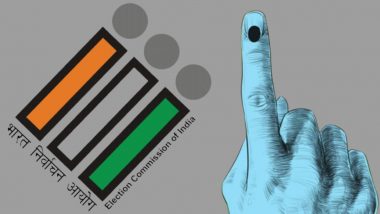Digital Branding for Election Campaigns








Digital Branding for Election Campaigns
Digital Branding for Election Campaigns plays a crucial role in shaping how political candidates are perceived and remembered by voters. A well-crafted digital brand creates a consistent and memorable identity that helps candidates stand out in a crowded election landscape. This encompasses various elements, from the design of campaign logos to the tone and messaging conveyed across social media, websites, and digital advertisements.
Key Components of Digital Branding for Political Campaigns
- Branding Elements: Logo, Colors, and Design
- Logo and Visual Identity: A strong logo is a visual representation of a candidate’s values and campaign message. It should be simple, recognizable, and scalable across various mediums. Consistent use of the logo on digital platforms (websites, social media, and email campaigns) helps reinforce the candidate’s identity.
- Color Scheme: Colors evoke emotions and associations. For example, blue is often associated with trust and stability, while red can evoke passion and urgency. Choosing the right color palette is essential for creating a visual identity that resonates with voters.
- Typography and Graphics: Using consistent fonts and graphic styles throughout digital assets enhances brand recognition. These design elements should align with the candidate’s core message, whether focusing on professionalism, progress, or unity.
- Consistent Messaging Across Platforms
- Unified Message: Digital branding is not only about visual design but also about how a candidate communicates their message. Whether through social media posts, website content, or video ads, the tone and message should remain consistent to build credibility and trust. This message should reflect the candidate’s values, policies, and vision for the future.
- Storytelling: Crafting a compelling narrative around the candidate’s journey, values, and policies helps connect on an emotional level with voters. This storytelling should be conveyed consistently across all digital platforms, from Instagram posts to YouTube videos, helping the candidate build a strong and relatable presence.
- Social Media Presence
- Platform-Specific Strategy: Different social media platforms require tailored strategies. For example, Twitter is ideal for real-time updates and engagement, while Instagram works well for visual content and personal stories. Maintaining a consistent voice and appearance across platforms helps voters easily recognize the campaign and engage with the content.
- Content Calendar: Planning and scheduling content ahead of time ensures that the campaign maintains a steady online presence. The content should align with the candidate’s brand and should include a mix of policy announcements, personal stories, endorsements, and calls to action.
- Website and Digital Hub
- Landing Page: A campaign website serves as the central hub for all digital activity. It should provide key information about the candidate, their policies, events, and how to get involved. It must reflect the overall branding in its design, layout, and user experience, ensuring visitors have a seamless journey from learning more to taking action (e.g., donating, volunteering, voting).
- Mobile Optimization: With increasing mobile usage, ensuring the website is mobile-friendly is crucial for accessibility and engagement. A responsive website helps candidates reach a wider audience and ensures all content is easily viewable on smartphones and tablets.
- Digital Advertising
- Consistent Ad Design: Digital ads on platforms like Google, Facebook, or YouTube should follow the same branding guidelines. The design, tone, and messaging should align with the overall campaign, making the ads instantly recognizable as part of the candidate’s election efforts.
- Targeted Campaigns: Using digital advertising to target specific demographics or regions allows for more efficient resource allocation. Customizing ads based on voter data (e.g., location, age, interests) ensures that the right message reaches the right people.
- Engagement and Interaction
- Interactive Content: Encouraging voter participation through interactive content such as polls, quizzes, or live Q&A sessions helps create engagement and strengthens the candidate’s connection with voters. This engagement, combined with the brand’s visual elements, keeps the candidate top of mind and builds a loyal following.
- User-Generated Content: Encourage supporters to share their own content, whether it’s photos from rallies, volunteer activities, or statements of support. User-generated content serves as authentic endorsements and can amplify the campaign’s reach and visibility.
- Analytics and Adjustment
- Measuring Effectiveness: Using tools like Google Analytics, Facebook Insights, and Twitter Analytics allows campaigns to measure the effectiveness of their digital branding efforts. By tracking metrics such as website traffic, engagement rates, and ad performance, campaigns can adjust their strategy in real time to optimize their branding efforts.
- A/B Testing: Testing different versions of digital assets (e.g., social media posts, landing pages, or ads) helps campaigns understand which branding elements resonate most with voters. This data-driven approach helps fine-tune the campaign’s digital presence for maximum impact.
Conclusion
Digital Branding for Election Campaigns is an essential strategy for candidates who want to establish a strong online presence and create a consistent, memorable image. From visual identity elements like logos and colors to the tone of messaging and engagement strategies, every aspect of the campaign’s digital presence should reflect the candidate’s core values and appeal to voters. A well-executed digital brand fosters trust, enhances recognition, and ultimately helps secure voter support in the highly competitive landscape of elections.

